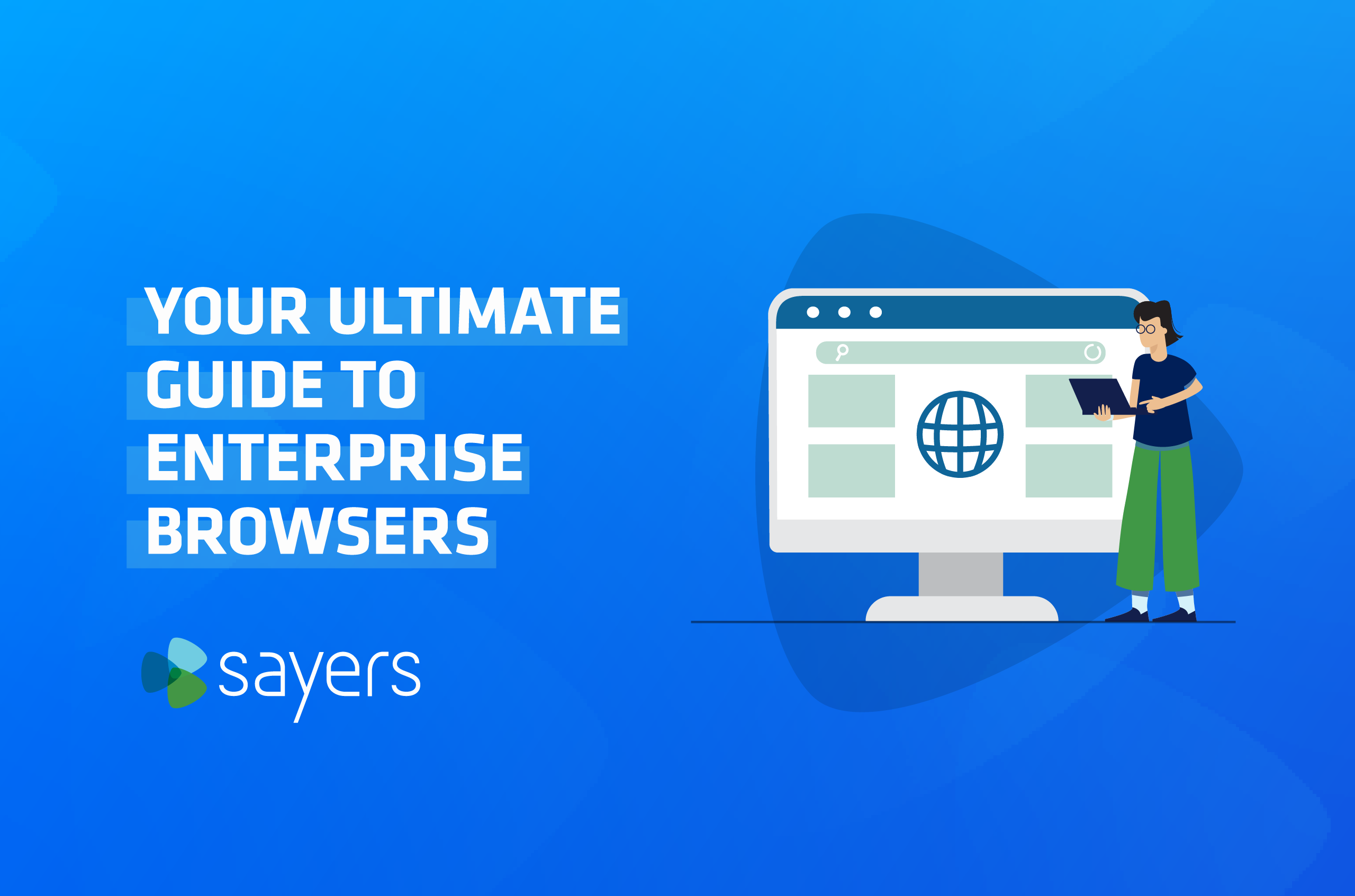


Where do your employees spend most of their workday? Whether in the office, working remotely, or taking a hybrid approach, your employees spend most of their time working within and through a web browser.
A Forrester Consulting study commissioned by Google found business users were spending 75% of their day working in a web browser, even before the pandemic’s extensive work-from-home initiatives.
With so much employee productivity dependent on accessing web-based applications and data, the world’s first enterprise browser launched a decade ago to offer a controlled browsing environment for business users. However, didn’t really take off until just a few years ago.
Since then, vendors have introduced new enterprise browser offerings with an added focus on a strong security framework to protect users and their data.
Enterprise browsers are purpose-built for the enterprise environment and hybrid workforce. With enhanced features for employees’ work-related browsing activities, these browsers also offer centralized management and control for IT teams.
Unlike commercial browsers, enterprise browsers provide enhanced security features and functionality to protect users, data, and applications. Users can securely and efficiently reach the internal and external web applications they need to do their jobs.
Enterprise browsers, which can be local or cloud-based, provide your organization with better visibility and control, especially for employees working from home or in smaller, remote offices.
Effective enterprise browsers enable you to:
According to a 2023 Gartner report on the future of enterprise browsers:
“By 2030, enterprise browsers will be the core platform for delivering workforce productivity and security software on managed and unmanaged devices for a seamless hybrid work experience.”
In that predicted future, browsers will tightly integrate with core security products used by enterprises to become a platform from which other security and productivity software will be deployed, managed, and secured.
Examples of today’s enterprise browsers include Google Chrome Enterprise, Island, Menlo Security, Microsoft Edge for Business, and Talon (acquired by Palo Alto Networks).
With a strong security approach, enterprise browsers can protect users from malware, phishing, and ransomware threats, ensuring the confidentiality, integrity, and availability of sensitive information.
Enterprise browsers make the time organizational users spend online more secure with advanced security measures such as authentication and encryption. Browser policies and controls ensure users can access only approved websites, applications, and features necessary for their role.
Enterprise browsers minimize the attack surface by securely managing web traffic and preventing sensitive data from leaking through private and SaaS applications – especially important in today’s remote workforce environment where employees may be using unmanaged devices to access corporate resources.
Beyond securing browsing activities, enterprise browsers offer several key benefits for organizations. These include:
Enterprise browsers isolate web processes to ensure sensitive information stays within a controlled environment. Your organization’s IT or security team can restrict employees’ activities in the browser, such as preventing them from downloading or uploading malicious files, or blocking certain websites or systems.
A central management hub enables IT departments to deploy and enforce security policies and updates along with uniform settings across the organization. You can customize your enterprise browser with options such as alignment with corporate branding.
Chris Willis, VP of Cybersecurity and Network Engineering at Sayers, says:
“Enterprise browsers are designed to safeguard productivity, privacy, and data integrity from adversarial threats, while simultaneously streamlining corporate expenses and simplifying the process of granting employees access to essential applications. This approach represents a dual benefit, serving the interests of both employers and employees effectively.”
Enterprise browsers work on different devices and operating systems to offer a seamless user experience.
When choosing an enterprise browser, consider factors such as the level of security provided, user experience, compatibility with existing IT infrastructure, privacy needs, and how easy it is to deploy and manage.
A secure enterprise browser should offer flexible policy controls and reporting capabilities, protection against browser vulnerabilities and threats, and secure access to applications and data.
Cloud-based browsers route all web traffic through a cloud-based platform, protecting against evasive malware and phishing attacks. When choosing local browsers or cloud-based browser security options, consider the following comparison:
| Local Browsers | Cloud-Based Browser Security |
| Centralized management | Cloud-based management |
| Distribution and updates | Automatic updates in the cloud |
| Limited access control policies | Comprehensive access control policies |
| May have limited impact on performance | Minimal impact on performance |
| Limited scalability | Scalable for any size organization |
Look for a browser that offers strong security features such as encryption, authentication, and real-time threat detection. Also consider the browser’s ability to protect user privacy and prevent data leakage through secure browsing and policy enforcement.
Vendor neutrality is another key factor. You’ll want a browser that doesn’t lock your organization into a single vendor, so you can easily transition to alternative solutions if needed.
Questions? Contact us at Sayers today to ensure the enterprise browser you choose aligns perfectly with your business requirements.